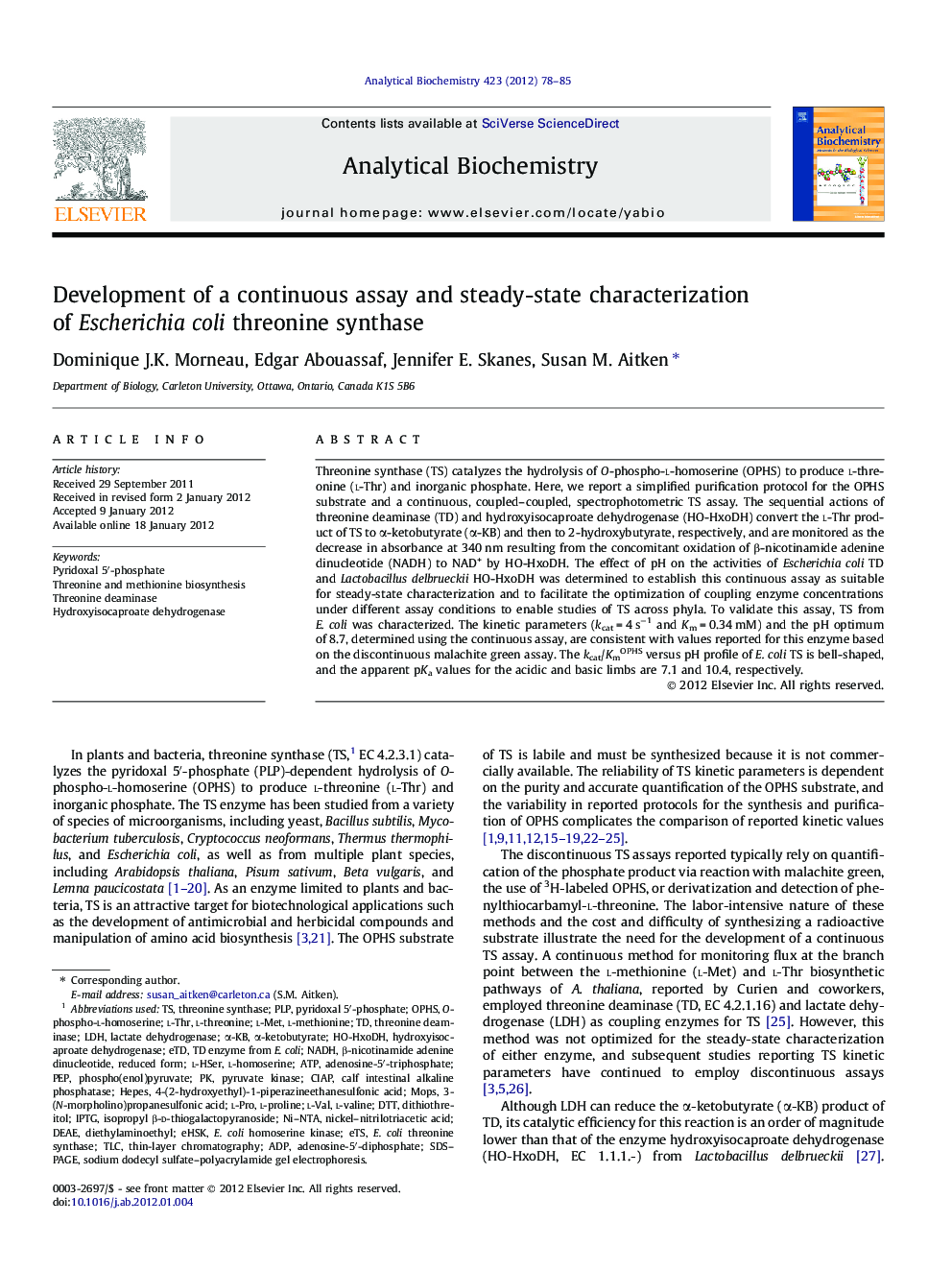| Article ID | Journal | Published Year | Pages | File Type |
|---|---|---|---|---|
| 1174399 | Analytical Biochemistry | 2012 | 8 Pages |
Abstract
Threonine synthase (TS) catalyzes the hydrolysis of O-phospho-l-homoserine (OPHS) to produce l-threonine (l-Thr) and inorganic phosphate. Here, we report a simplified purification protocol for the OPHS substrate and a continuous, coupled-coupled, spectrophotometric TS assay. The sequential actions of threonine deaminase (TD) and hydroxyisocaproate dehydrogenase (HO-HxoDH) convert the l-Thr product of TS to α-ketobutyrate (α-KB) and then to 2-hydroxybutyrate, respectively, and are monitored as the decrease in absorbance at 340 nm resulting from the concomitant oxidation of β-nicotinamide adenine dinucleotide (NADH) to NAD+ by HO-HxoDH. The effect of pH on the activities of Escherichia coli TD and Lactobacillus delbrueckii HO-HxoDH was determined to establish this continuous assay as suitable for steady-state characterization and to facilitate the optimization of coupling enzyme concentrations under different assay conditions to enable studies of TS across phyla. To validate this assay, TS from E. coli was characterized. The kinetic parameters (kcat = 4 sâ1 and Km = 0.34 mM) and the pH optimum of 8.7, determined using the continuous assay, are consistent with values reported for this enzyme based on the discontinuous malachite green assay. The kcat/KmOPHS versus pH profile of E. coli TS is bell-shaped, and the apparent pKa values for the acidic and basic limbs are 7.1 and 10.4, respectively.
Related Topics
Physical Sciences and Engineering
Chemistry
Analytical Chemistry
Authors
Dominique J.K. Morneau, Edgar Abouassaf, Jennifer E. Skanes, Susan M. Aitken,
